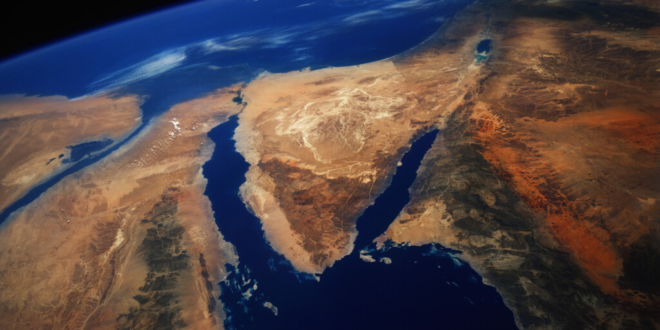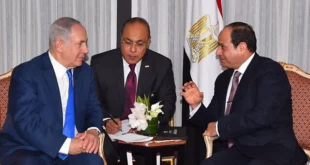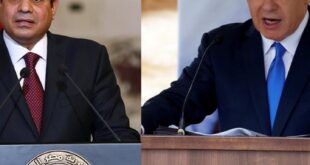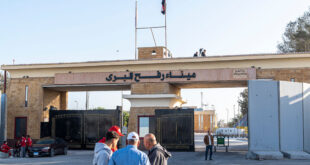- The Sinai Peninsula is a strategic land bridge between Africa and Asia. The Sinai Peninsula, which connects the continents of Africa and Asia, has a landmass of 23,000 square miles, approximately the size of West Virginia. The peninsula is bordered by the vital global shipping artery of the Suez Canal and the Gulf of Suez to the west, the Mediterranean Sea to the north, the Red Sea to the south, and Israel and the Gulf of Aqaba to the east. The peninsula has a diverse landscape, featuring coastal plains along the northern Mediterranean, extensive desert in the center, and rugged mountains in the south.
- The Sinai is historically Egyptian territory.
The ancient Egyptians controlled the Sinai Peninsula, using it as a source of copper and turquoise. According to the Hebrew Bible, the prophet Moses received the Ten Commandments when he ascended Mount Sinai in the southern part of the peninsula, following the Israelites’ exodus from Egypt’s Nile Delta. The region, along with the rest of Egypt, later came under the control of successive empires, including the Romans, the Byzantines, the Ottomans, and the British. In modern times, the Battles of the Sinai helped secure the nascent State of Israel’s survival in the 1948-1949 Arab-Israeli War. The territory then fell under Israeli control briefly during the Sinai War of 1956 and then for over a decade following the 1967 Six-Day War. Thousands of Israelis subsequently established communities in the Sinai along the Mediterranean coast and the Gulf of Aqaba. Twelve years later, as part of the Camp David Accords mediated by the United States, Israel agreed to remove its citizens and return the area to Egypt in 1982 as part of the peace treaty. - The Sinai has been a hotbed of jihadi militant activity, requiring Egyptian counterterrorism operations.
The Sinai has been a focal point of jihadi militant activity, including the 2004 Taba and the 2005 Sharm el-Sheikh hotel bombings, and repeated sabotage attacks on the Egypt-Israel gas pipeline. Since 2014, the most active Islamist group in the region has been the ISIS-affiliated Wilayat Sinai, a Salafi-Jihadi group that has carried out attacks against Egyptian security forces, infrastructure, and civilians. Notable terrorist attacks include the 2015 Russian passenger jet downing that killed 224 people, the 2017 massacre of 305 worshippers at the Sufi al-Rawda Mosque, and the 2017 targeted attacks on Coptic Christians in the northern city of el-Arish. The Egyptian military has launched extensive counterterrorism operations, sometimes with intelligence and air support from Israel. While the counterinsurgency campaign has degraded Wilayat Sinai, elements of the ISIS affiliate continue to pose limited challenges. - Lucrative smuggling takes place from the Sinai into Gaza.
North Sinai shares a nearly nine-mile border with Gaza known as the Philadelphi corridor. As part of an anti-smuggling effort, Egypt has reportedly destroyed more than 3,000 tunnels along the Gaza-Sinai border since 2013. However, following Hamas’s brutal October 2023 massacre launched from Gaza, the Israel Defense Forces (IDF) uncovered hundreds more tunnels leading from Gaza into Sinai used for smuggling weapons, materiel, fuel, drugs, and pharmaceuticals. More recently, smugglers have adapted by using drones. This smuggling economy is estimated to be worth hundreds of millions of dollars annually, with bribes paid to Egyptian officials to allow the tunnel operations to continue. Meanwhile, Hamas collects taxes on smuggled materials and goods. - Egypt tightly regulates movement from Gaza into the Sinai.
To prevent Gaza-based militant groups from smuggling weapons and fighters into the Sinai and to limit cross-border attacks, Egypt strictly controls its border with Gaza, especially at the Rafah crossing — the only official border crossing with the territory. Hamas is ideologically aligned with the Muslim Brotherhood, an Islamist movement and political group outlawed in Egypt since 2013. Egypt’s President Abdel Fattah el-Sisi, as well as other Arab leaders, considers the Brotherhood a significant threat to regional stability. Since the start of the Gaza conflict, Egypt has rejected the displacement of any Gazans, although more than 100,000 Gazans have bought their way into Egypt since October 2023. - The Sinai was largely demilitarized as part of the Camp David Accords.
One of the key provisions of the 1979 Egypt-Israel peace treaty was the demilitarization of the peninsula to ensure long-term stability between the two countries. The agreement established a phased withdrawal of Israeli forces and placed restrictions on the deployment of Egyptian military equipment and personnel. When the United Nations was unable to authorize a peacekeeping mission to monitor compliance, Egypt and Israel agreed to form an independent organization, the Multinational Force and Observers (MFO). This force continues to operate, consisting of approximately 1,000 personnel drawn from 13 nations — the majority from the United States. - Egyptian military forces maintain a limited presence in the Sinai.
The 1979 treaty divided the Sinai Peninsula into four security zones, each with different allowances and constraints on the activities of Egyptian and Israeli military forces. Area A near the Suez Canal permits Egyptian tanks, artillery, and mechanized divisions; Area B in central Sinai permits Egyptian police and border guards; Area C near Israel and the Gaza border permits lightly armed Egyptian police and MFO peacekeepers; and Area D is the Israeli side of the border, where Israel maintains a limited military presence. The Agreed Activities Mechanism of the treaty has allowed for modifications, such as Israel agreeing to Egypt’s requests to deploy additional Egyptian forces to Area A in 2011 during the Arab Spring and again in 2012 and 2013 to Area C in response to militant activity. - The Sinai is sparsely populated, mostly by Bedouin tribes.
According to the 2020 Egyptian census, the Sinai’s 600,000 residents are concentrated in the coastal cities and are divided among urban residents, rural dwellers, and nomadic or semi-nomadic Bedouin tribes. Tensions between the Bedouin communities and the Egyptian government have persisted for decades, as many tribes feel marginalized and excluded from economic and political opportunities. Strict security policies, land restrictions, and limited access to state resources have led some Bedouins to engage in smuggling and, in some cases, to align with militant groups. - Israel tightly controls its southern border with the Sinai.
Israel has implemented a multi-layered strategy to secure the Israel-Sinai border. Completed in 2013, Israel built a 152-mile barrier to reduce illegal migration, smuggling, and militant attacks. The IDF continuously surveils the border using cameras, drones, motion sensors, and radars, as well as ground and air patrols and unmanned aerial vehicles. Israel and Egypt coordinate and share intelligence to monitor and counter militant groups operating in the Sinai, and Israel restricts civilian movement within Israel near the border to reduce attacks. - The Sinai has been proposed multiple times as a location for Gazan resettlement.
Since Israel achieved statehood in 1948, the resettlement of Palestinians from Gaza to the Sinai has repeatedly been considered by the United States, Israel, and the United Nations. On several occasions, Egypt blocked the proposal, citing Egyptian sovereignty and rejecting any attempt to shift the “Palestinian issue” onto Egypt. In 2023, Egyptian President Abdel Fattah el-Sisi warned that relocation is a “red line for Egypt” that could both destroy the “Palestinian cause” and destabilize the Sinai. In response, Egypt has reinforced its border with Gaza and strengthened the Rafah border crossing to limit the movement of Gaza’s refugees.

 Eurasia Press & News
Eurasia Press & News



